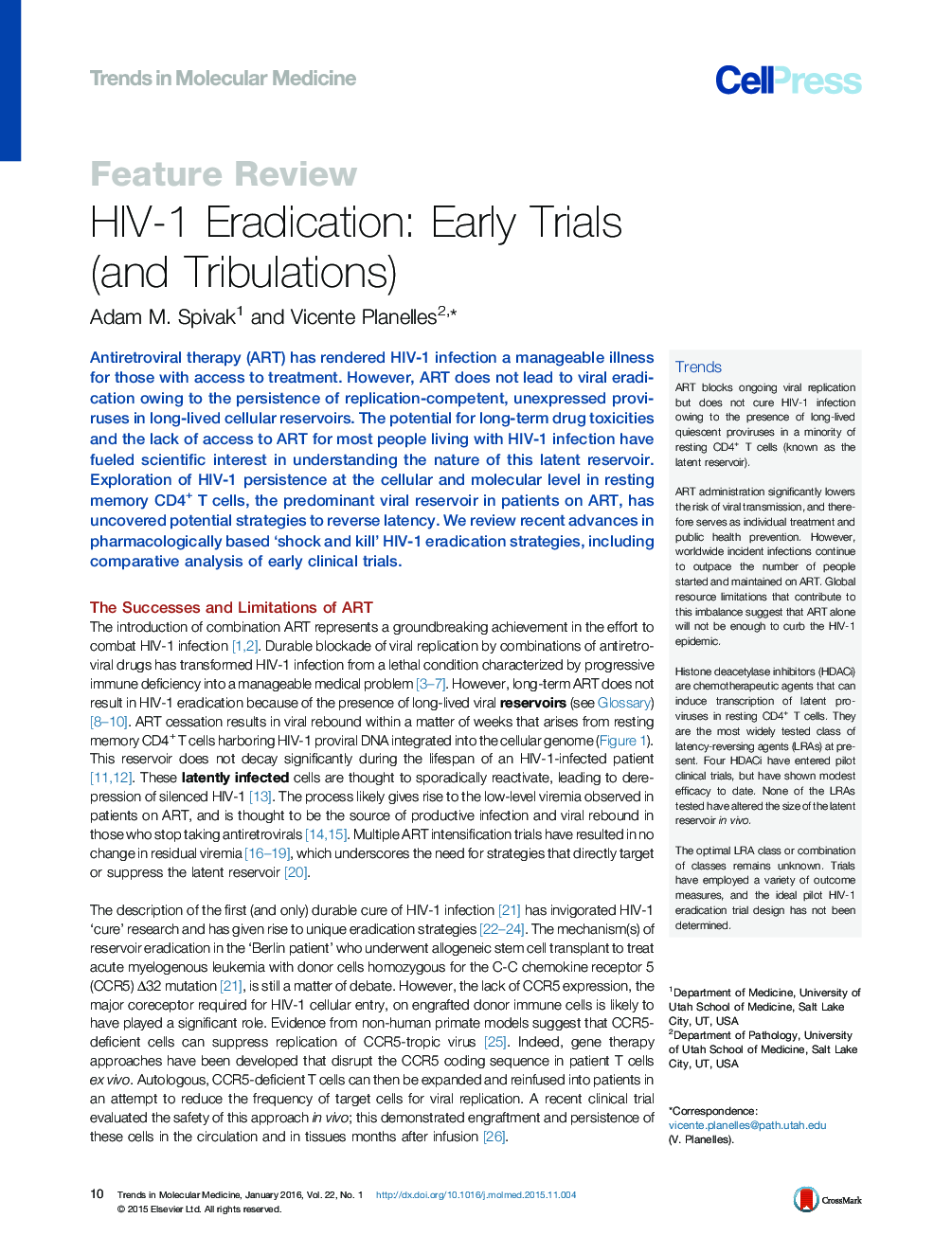| Article ID | Journal | Published Year | Pages | File Type |
|---|---|---|---|---|
| 2838433 | Trends in Molecular Medicine | 2016 | 18 Pages |
Antiretroviral therapy (ART) has rendered HIV-1 infection a manageable illness for those with access to treatment. However, ART does not lead to viral eradication owing to the persistence of replication-competent, unexpressed proviruses in long-lived cellular reservoirs. The potential for long-term drug toxicities and the lack of access to ART for most people living with HIV-1 infection have fueled scientific interest in understanding the nature of this latent reservoir. Exploration of HIV-1 persistence at the cellular and molecular level in resting memory CD4+ T cells, the predominant viral reservoir in patients on ART, has uncovered potential strategies to reverse latency. We review recent advances in pharmacologically based ‘shock and kill’ HIV-1 eradication strategies, including comparative analysis of early clinical trials.
TrendsART blocks ongoing viral replication but does not cure HIV-1 infection owing to the presence of long-lived quiescent proviruses in a minority of resting CD4+ T cells (known as the latent reservoir).ART administration significantly lowers the risk of viral transmission, and therefore serves as individual treatment and public health prevention. However, worldwide incident infections continue to outpace the number of people started and maintained on ART. Global resource limitations that contribute to this imbalance suggest that ART alone will not be enough to curb the HIV-1 epidemic.Histone deacetylase inhibitors (HDACi) are chemotherapeutic agents that can induce transcription of latent proviruses in resting CD4+ T cells. They are the most widely tested class of latency-reversing agents (LRAs) at present. Four HDACi have entered pilot clinical trials, but have shown modest efficacy to date. None of the LRAs tested have altered the size of the latent reservoir in vivo.The optimal LRA class or combination of classes remains unknown. Trials have employed a variety of outcome measures, and the ideal pilot HIV-1 eradication trial design has not been determined.
